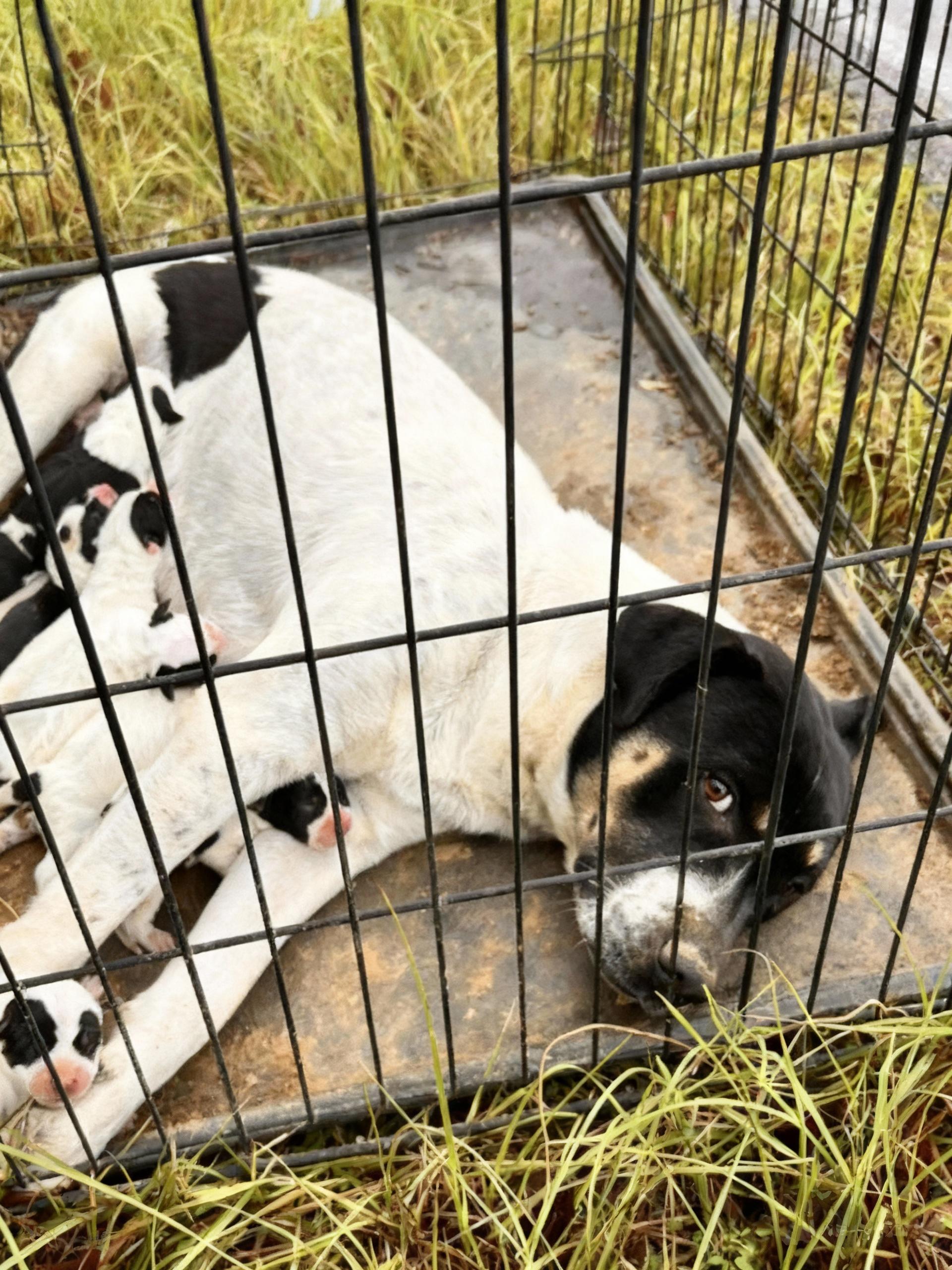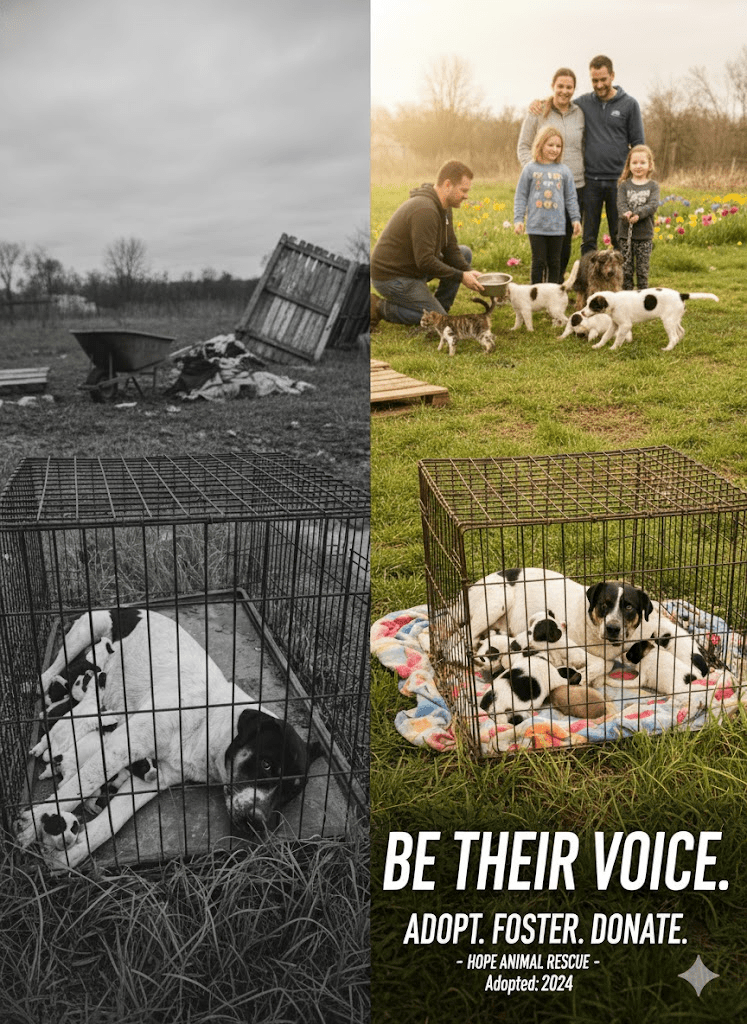The image before us is a stark, heart-wrenching tableau that transcends a mere photograph; it is a profound testament to suffering, a silent scream frozen in time. Within the cold, unyielding confines of a wire cage, a mother dog lies, her body a canvas of black and white, her gaze a desolate pool of resignation and exhaustion. Her puppies, tiny, vulnerable bundles of innocence, nuzzle against her, drawing sustenance from a mother whose own reserves appear perilously depleted. The setting itself speaks volumes – sparse, straggly grass peeking through the bars, suggesting an outdoor existence, exposed to the elements, devoid of the warmth, safety, and comfort every living creature deserves. This isn’t just a picture of animals; it’s a visceral representation of neglect, abandonment, and the desperate need for intervention. The mother’s eyes, in particular, hold a depth of sorrow that is almost unbearable, reflecting not just her current predicament but perhaps a history of hardship, a life lived on the fringes, always just surviving, never thriving. Her puppies, oblivious in their infancy, symbolize the cyclical nature of this suffering if left unaddressed. They are born into a world of deprivation, their first experiences shaped by the harsh realities of their environment. This image serves as a powerful, undeniable call to conscience, urging us to look beyond the frame and acknowledge the widespread issue of animal neglect, prompting us to question our roles and responsibilities in preventing such anguish and fostering a more compassionate world for these voiceless beings.

The reality depicted in the opening image is not an isolated incident but a pervasive issue impacting countless animals globally. Animal neglect encompasses a spectrum of inhumane conditions, ranging from inadequate food and water to lack of shelter, veterinary care, and social interaction. It often stems from a combination of factors, including ignorance, financial hardship, apathy, and, in some cases, deliberate cruelty. The consequences for animals are dire: malnutrition, disease, psychological trauma, and a significantly shortened lifespan. For mother dogs and their litters, like the one we see, the stakes are even higher. A mother weakened by neglect struggles to provide for her young, leading to high mortality rates among puppies who are already fragile. The cycle of suffering begins anew with each birth, perpetuating a grim existence for generations of animals unless human intervention breaks the chain. This image forces us to confront the uncomfortable truth that while many animals enjoy loving homes, a vast number are left to languish, their cries unheard, their needs unmet.







